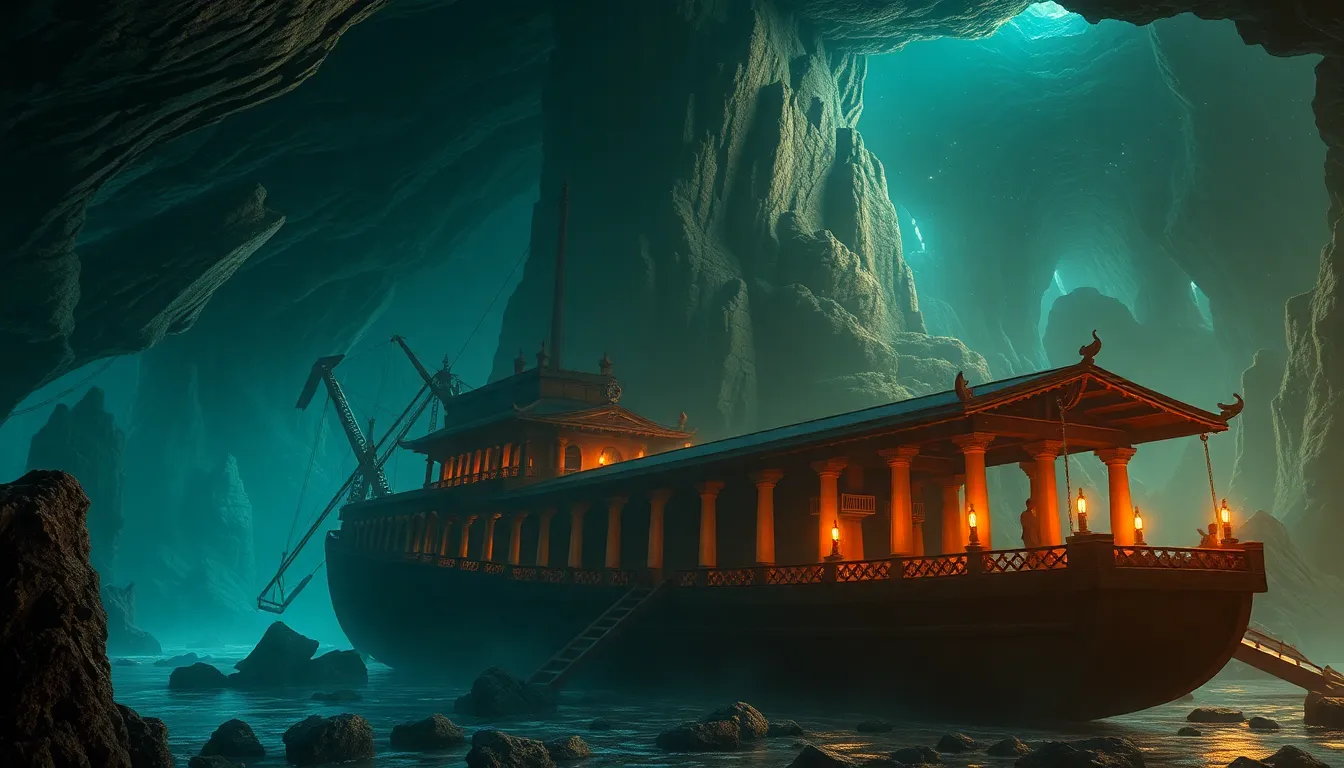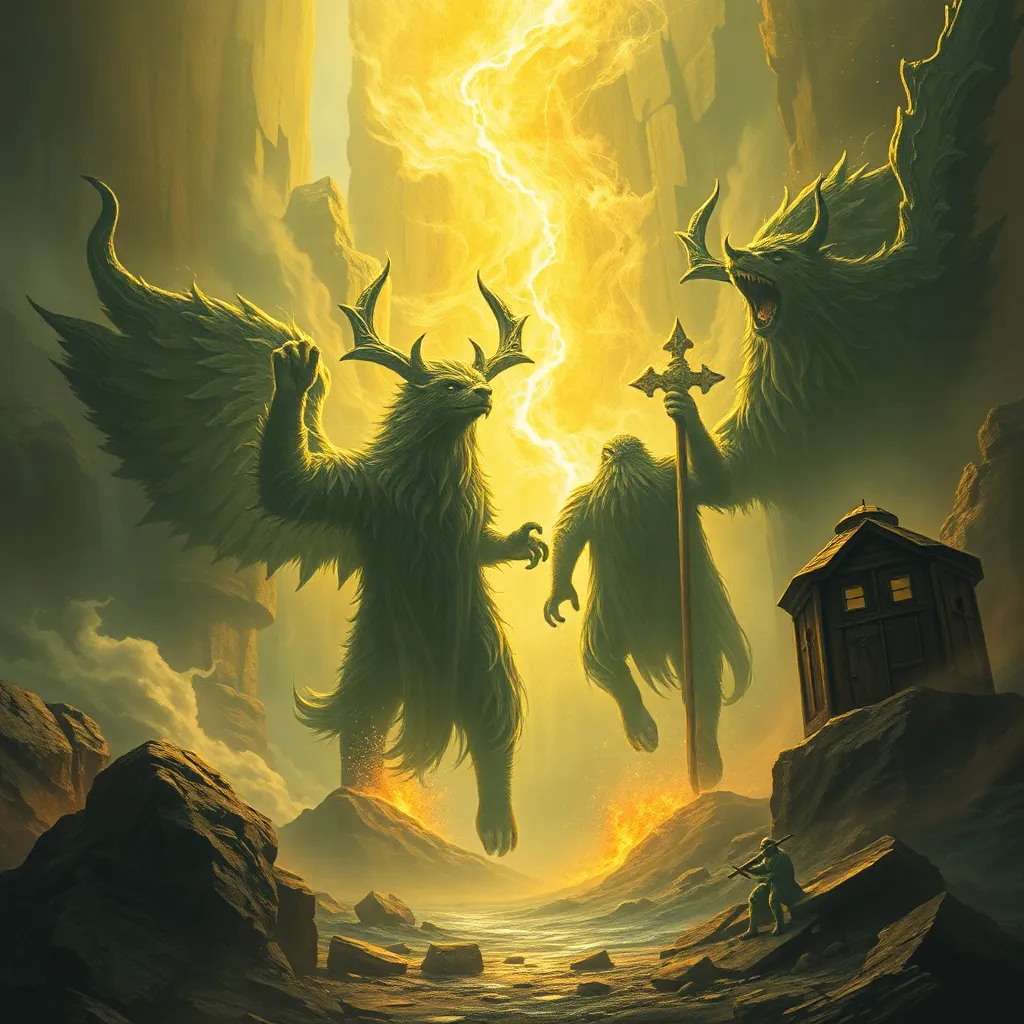Mythical Journeys: Famous Expeditions to the Underworld
I. Introduction
The concept of the Underworld has fascinated humankind for centuries, manifesting in various forms across different cultures and mythologies. Often depicted as a realm beneath the earth, the Underworld serves as a final resting place for souls, a domain of the dead, and a locus of transformation and revelation.
These journeys to the Underworld are significant cultural narratives that reflect human fears, hopes, and the quest for understanding life after death. This article aims to explore famous expeditions to the Underworld, shedding light on the narratives that shaped our understanding of mortality and the afterlife.
II. The Concept of the Underworld Across Cultures
Different cultures have their unique depictions of the Underworld, which often share common motifs and themes. Here is an overview of some notable examples:
- Greek Mythology: The Underworld, known as Hades, is ruled by the god of the same name and features various regions, including the Elysian Fields for the virtuous.
- Roman Mythology: Similar to Greek beliefs, the Romans believed in a shadowy afterlife governed by Pluto, where souls would be judged.
- Egyptian Mythology: The Underworld, or Duat, is a complex realm where the dead undergo trials before entering the afterlife, often represented by the journey through the Hall of Ma’at.
- Mesopotamian Mythology: The underworld is a bleak place called Kur, inhabited by spirits of the dead, with little hope for a better existence.
Common themes associated with underworld journeys include:
- The struggle between life and death
- The quest for knowledge or redemption
- The inevitability of fate and the afterlife
The role of the Underworld in human experience often emphasizes the importance of legacy, morality, and the existential questions surrounding mortality.
III. Orpheus and the Quest for Eurydice
One of the most poignant tales of the Underworld is that of Orpheus, a legendary musician whose love for Eurydice transcended death. Orpheus was celebrated for his enchanting music, which could charm all living things and even inanimate objects.
The narrative of his journey begins with the tragic death of Eurydice, who is bitten by a snake on their wedding day. Stricken with grief, Orpheus descends into the Underworld, determined to retrieve her. Armed only with his lyre, he softens the hearts of Hades and Persephone, who allow him to take Eurydice back to the land of the living, with one condition: he must not look back at her until they reach the surface.
As they ascend, Orpheus’s love and doubt overwhelm him, leading him to glance back, causing Eurydice to vanish forever. This narrative is steeped in themes of love and loss, illustrating the profound connection between the living and the dead.
The impact of Orpheus’s story is immense, influencing countless works of art and literature, including operas, poems, and plays, symbolizing the enduring human desire to overcome death for love.
IV. The Descent of Inanna: A Sumerian Tale
Inanna, the Sumerian goddess of love, war, and fertility, embarked on a transformative journey to the Underworld, a tale rich with symbolism. Inanna descends to the Underworld to attend the funeral of her sister, Ereshkigal, the queen of the Underworld.
Her journey is fraught with challenges, as she must pass through seven gates, shedding a piece of her attire at each one. Upon reaching the throne of Ereshkigal, Inanna is confronted and ultimately killed. However, her story does not end here; she is later resurrected, symbolizing death and rebirth.
This narrative encapsulates the cycle of life and death, reflecting agricultural themes of planting and harvest. Inanna’s descent and return signify the importance of embracing change and the inevitability of transformation in life.
Inanna’s journey holds significant cultural importance, influencing subsequent myths and rituals surrounding fertility and the seasons.
V. Aeneas in the Underworld: Virgil’s Epic
Aeneas, a Trojan hero in Virgil’s “Aeneid,” undertakes a journey to the Underworld, which serves both personal and societal purposes. His descent is prompted by the need to consult the spirit of his father, Anchises, who provides guidance for Aeneas’s mission to establish a new homeland for the Trojans in Italy.
During his journey, Aeneas encounters various souls, including Dido, the queen of Carthage, and the future heroes of Rome. Each encounter is laden with meaning, revealing the themes of duty, fate, and the cost of leadership.
The prophecy Aeneas receives from Anchises clarifies his mission and the future of Rome, emphasizing the significance of destiny in shaping history. Aeneas’s Underworld journey serves as a vital narrative device, linking personal quests with broader themes of fate and legacy.
VI. The Heroic Journey of Gilgamesh
The epic of Gilgamesh, one of the oldest known pieces of literature, chronicles the adventures of its eponymous hero. In his quest for immortality following the death of his friend Enkidu, Gilgamesh embarks on a perilous journey to the Underworld.
His descent is marked by trials and encounters with various deities and spirits, where he learns about the inevitability of death and the importance of leaving a lasting legacy. The Underworld is depicted as a grim and desolate place, emphasizing the stark realities of mortality.
Through his experiences, Gilgamesh comes to terms with his humanity, recognizing that while one cannot escape death, one can achieve immortality through deeds and memories.
The lessons learned by Gilgamesh resonate throughout history, influencing later literature and philosophical thought regarding existence and legacy.
VII. Odysseus and the Land of the Dead
In Homer’s “Odyssey,” Odysseus’s journey to the Underworld is a pivotal moment in his epic quest to return home. After being advised by the sorceress Circe, he travels to the Land of the Dead to seek counsel from the prophet Tiresias.
During this encounter, Odysseus meets the spirits of fallen heroes, including Achilles and Agamemnon. These interactions highlight themes of sacrifice and the search for knowledge, as Odysseus learns about the consequences of his actions and the burden of leadership.
The underworld episode serves as a crucial turning point in Odysseus’s journey, reinforcing the importance of wisdom and the sacrifices made for loved ones. It encapsulates the human experience of grappling with fate, mortality, and the quest for understanding in the face of the unknown.
VIII. The Underworld in Eastern Mythologies
Eastern mythologies also provide rich narratives concerning the Underworld. In Hinduism, the concept of Naraka serves as a realm of punishment and purification for souls before rebirth. Similarly, Buddhism discusses the idea of Naraka, emphasizing the impermanence of existence and the cyclical nature of life, death, and rebirth.
These perspectives offer a contrasting view to Western underworld depictions, focusing on moral consequences and the potential for redemption and enlightenment.
In both traditions, the Underworld is not merely a place of despair; it is a necessary phase in the soul’s journey toward understanding and liberation.
IX. Conclusion
The exploration of mythical journeys to the Underworld reveals profound insights into human nature, mortality, and the quest for understanding. From Orpheus’s tragic love story to Gilgamesh’s search for immortality, these narratives resonate across time and culture, reflecting our deepest fears and hopes regarding life and death.
As we delve into these ancient tales, we not only uncover the beliefs of past civilizations but also gain a deeper appreciation for the shared human experience that transcends cultural boundaries.



